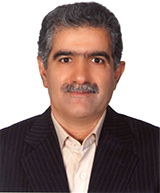Professor Mehdi Behzad,
Condition Monitoring Center, Sharif University of Technology
http://sharif.ir/~m_behzad/
Dr. Mehdi Behzad is founding director of the condition monitoring center at Sharif University of Technology, where he has conducted annual condition monitoring and fault diagnosis (CMFD) conference since 2006. He has a strong background in applying Condition Monitoring in a variety of Industries. This includes vibration analysis and problem shooting in power plants, oil, gas, petrochemical, still, cement and other industries. Along with his teaching engagement at Sharif University, Dr. Behzad runs vibration analysis courses for industries too. Dr. Behzad is a prolific researcher in vibration condition monitoring and remaining useful life calculation. He has published numerous papers in journals and conferences in this area apart from his two books on applied vibration and condition monitoring. Professor Mehdi Behzad is currently a member of WG6 in ICNDT for preparing Guide to qualification and Certification of personnel for Condition Monitoring.
Machinery Vibration Monitoring
Machine vibration that is not detected early enough will often lead to severe machine damage requiring costly repairs or even total machine replacement. Standards and guidelines on machine vibration monitoring will be surveyed in this paper. Different application of displacement, velocity and acceleration in machinery vibration survey will be discussed with industrial case studies. Low frequency and high frequency analysis of the vibration lead to different results when one uses the acceleration signal for fault diagnosis. Case studies will be addressed to illustrate these differences.
In the second part, remaining useful life (RUL) calculation based on vibration acceleration trend in rolling element bearings (REBs) will be discussed. Almost fifty percent of failures in rotating machineries are because of REBs damage. Therefore, the more accurate RUL prediction of REBs leads to considerable enhancement of reliability in these kind of equipment. According to ISO 13381-1:2015, five general approach for prognostics modeling are: physics-based models, statistical models, heuristic models, data-driven models, and hybrid models. Artificial intelligence (AI) approaches are the most common methods in data-driven group. In this lecture, the application of AI approaches for prognostics will be discussed. Main challenges and capabilities of these methods will be reviewed. Beside the AI algorithm, selecting an appropriate feature for inputs of AI model has a crucial role in performance of prognostics model. A group of features extracted from high-frequency bandwidth of vibration spectrum are introduced. Then, two algorithms based on feedforward neural network (FFNN) are developed for online and offline condition monitoring data. Using these algorithms, the results of RUL prediction on bearing accelerated life tests data as well as industrial machine vibration monitoring data will be presented and discussed.
|

|
